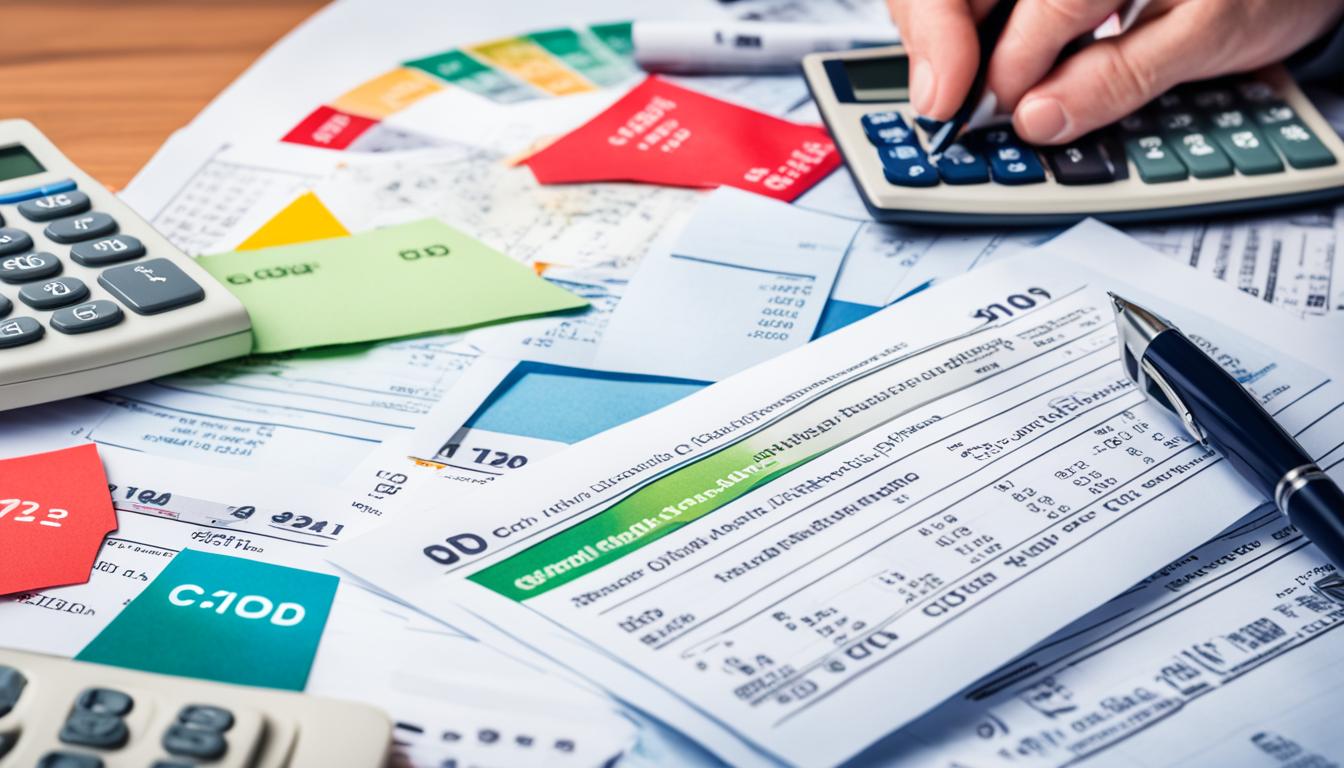In the United States, individuals with poor credit scores or a history of bankruptcy often face significant challenges when trying to obtain traditional loans from banks and other mainstream lenders. However, there is a specialized lending market that caters to these “subprime” borrowers, offering what are known as “bad credit loans.” These loans provide an alternative financing option for those with low credit ratings, allowing them to access much-needed funds even with their poor credit history.
Key Takeaways
- Bad credit loans are financing products designed for individuals with low credit scores or poor credit histories.
- These loans are typically offered by alternative lenders, such as online platforms, consumer finance companies, or specialized subprime lenders.
- Bad credit loans provide a second chance for those who cannot access traditional bank loans due to their credit profile.
- Common types of bad credit loans include payday loans, installment loans, and title loans, each with its own features and terms.
- While bad credit loans can be a solution for urgent financial needs, they also come with significant risks, including high interest rates and fees.
Understanding Bad Credit Loans
In the realm of personal finance, bad credit loans have emerged as a viable option for individuals who struggle to obtain traditional financing due to their low credit scores, poor credit histories, or a history of bankruptcy. These specialized lending products are designed to cater to the needs of subprime borrowers, offering them an alternative path to access much-needed funds.
What Are Bad Credit Loans?
Bad credit loans, also known as subprime loans or non-prime lending, are a type of financing solution targeted at high-risk borrowers. Unlike conventional bank loans, these loans are typically offered by alternative lenders, such as online platforms, consumer finance companies, or specialized subprime lenders, rather than traditional financial institutions. These lenders are willing to take on the higher risk associated with borrowers who have low credit scores or a history of credit challenges.
Why Do People Seek Bad Credit Loans?
Individuals with bad credit often seek these types of loans for a variety of reasons. Some may need to cover unexpected expenses, such as medical bills or car repairs, while others may be looking to consolidate existing debt or establish a positive credit history through a second chance loan. In many cases, bad credit borrowers have exhausted their options with mainstream lenders and turn to alternative credit options, such as bad credit loans or high-risk financing, to access the funds they need.
Regardless of the specific reason, bad credit loans provide a financial lifeline for those who might otherwise be shut out of the traditional lending market due to their low credit score solutions or poor credit borrowing history.
Types of Bad Credit Loans In USA
In the United States, individuals with poor credit or a history of financial challenges have access to various types of bad credit loans designed to provide alternative financing options. These loans, offered by specialized lenders, cater to subprime borrowers who may have difficulty obtaining traditional loans from banks or mainstream lenders. The most common types of bad credit loans in the USA include:
Payday Loans
Payday loans are short-term, high-interest alternative credit options that provide quick access to cash, typically in the range of $100 to $1,000. These loans are intended to be repaid on the borrower’s next payday, making them a popular choice for those in need of second chance loans or poor credit borrowing solutions.
Installment Loans
Installment loans are a form of non-prime lending that allow borrowers to repay the loan in fixed, scheduled payments over a set period of time, typically ranging from a few months to a few years. These high-risk financing solutions can be helpful for individuals seeking low credit score solutions or credit repair assistance.
Title Loans
Title loans are a type of unconventional lending where the borrower uses their vehicle’s title as collateral to secure a short-term loan, often with high interest rates. This bad credit loan option is particularly appealing to those with poor credit borrowing needs who may not have access to other alternative credit options.
Each of these bad credit loan types has its own unique features, terms, and considerations for borrowers to carefully evaluate before making a decision. Understanding the various options available can help individuals with low credit score solutions and second chance loans find the most suitable financing solution for their specific needs.
Bad Credit Loans In USA: Pros and Cons
As with any financial product, bad credit loans in the United States come with both advantages and disadvantages that borrowers should carefully consider. Understanding the potential benefits and drawbacks can help individuals make informed decisions about whether a bad credit loan is the right choice for their unique circumstances.
Advantages of Bad Credit Loans
One of the primary advantages of bad credit loans is that they provide a much-needed lifeline for individuals with poor credit histories or low credit scores who may not qualify for traditional bank loans. These alternative credit options can offer a second chance for borrowers to access the funds they need, whether for emergency expenses, debt consolidation, or other financial objectives. Additionally, the application process for bad credit loans is often faster and more streamlined compared to traditional lending, allowing poor credit borrowers to obtain quick cash when they need it most.
Furthermore, some bad credit loans, such as installment loans, can also help borrowers improve their credit scores over time by reporting on-time payments to credit bureaus. This can be a valuable asset for those seeking to rebuild their credit and access more favorable financing options in the future.
Disadvantages of Bad Credit Loans
While bad credit loans can provide a much-needed solution for some borrowers, they also come with significant drawbacks. One of the primary disadvantages is the high-interest rates and fees associated with these subprime loans and non-prime lending products. This can result in a high-risk financing situation, where borrowers end up paying substantially more in the long run than they would with a traditional loan.
Additionally, the unconventional lending practices of some bad credit loan providers may lead to a debt trap, with borrowers unable to keep up with the repayment terms and finding themselves in a cyclical pattern of poor credit borrowing. This can ultimately worsen their financial situation and make it even more challenging to achieve long-term financial stability.
| Advantages | Disadvantages |
|---|---|
|
|
Eligibility Criteria for Bad Credit Loans
When it comes to securing a bad credit loan in the US, there are certain eligibility criteria that borrowers must meet. These bad credit loans, also known as subprime loans or non-prime lending, are designed to cater to individuals with low credit scores, poor credit histories, or a history of bankruptcy. While the specific requirements may vary across different alternative credit options and unconventional lending providers, there are some common factors that lenders consider:
- Minimum Age Requirement – Borrowers typically need to be at least 18 years old to qualify for a bad credit loan or second chance loan.
- Steady Income – Lenders often require proof of a stable source of income, such as employment, self-employment, or government benefits, to ensure the borrower’s ability to make timely loan repayments.
- Proof of Identity and Residency – Borrowers will need to provide valid identification documents, such as a driver’s license or Social Security card, as well as proof of their current address.
- Collateral (for Secured Loans) – For certain types of bad credit loans, such as title loans, borrowers may need to provide collateral, like a vehicle, to secure the financing.
- Minimum Loan Amount – Some lenders may have a minimum loan amount requirement, typically ranging from $500 to $1,000, to be eligible for a bad credit loan.
It’s important to note that the eligibility criteria for bad credit loans can vary significantly among different lenders and loan products. Borrowers should carefully review the specific requirements of each alternative credit option or unconventional lending provider before applying to ensure they meet the necessary qualifications.

How to Apply for Bad Credit Loans In USA
Navigating the process of securing a bad credit loan in the United States can seem daunting, but by understanding the key steps involved, individuals with poor credit can increase their chances of obtaining the financing they need. Whether you’re seeking a payday loan, an installment loan, or a title loan, the application process typically follows a similar framework.
Documents Required
To apply for a bad credit loan, borrowers will typically need to provide the following documentation:
- A valid government-issued ID, such as a driver’s license or passport
- Proof of income, which may include recent pay stubs, bank statements, or tax returns
- Information about their current employment, including the name of their employer and their position
- Details about their existing debt obligations, including any outstanding loans or credit card balances
- Proof of residence, such as a utility bill or rental agreement
Application Process
The application process for a bad credit loan in the US often involves the following steps:
- Research and compare lenders: Explore the various bad credit loan options available, comparing interest rates, fees, repayment terms, and eligibility requirements to find the best fit for your needs.
- Complete the application: Most lenders now offer online applications, allowing you to submit your information and required documents electronically. Be prepared to provide accurate and truthful information to improve your chances of approval.
- Undergo a credit check: Lenders will typically perform a soft credit inquiry to assess your creditworthiness, considering factors such as your credit score, payment history, and debt-to-income ratio.
- Receive a decision: The lender will review your application and supporting documents and provide a decision, typically within a few business days. If approved, you’ll receive the loan funds, often within 24 to 48 hours.
- Comply with loan terms: Once you’ve received the loan, it’s crucial to make timely payments and adhere to the agreed-upon repayment schedule to avoid late fees or negative impacts on your credit score.
By understanding the documentation required and the step-by-step application process, individuals with poor credit can navigate the world of bad credit loans in the US with confidence and increase their chances of securing the financing they need.
Bad Credit Loan Alternatives
For individuals with poor credit, there are alternative options to
bad credit loans
that may be worth considering. These alternatives can provide access to financing while helping to improve one’s credit profile over time.
Credit Repair Assistance
One alternative to bad credit loans is to seek credit repair assistance. Credit repair services can help individuals with low credit scores identify and dispute any errors or inaccuracies on their credit reports, which can negatively impact their creditworthiness. By addressing these issues, individuals may be able to improve their credit scores and potentially qualify for more favorable financing options in the future.
Secured Loans
Secured loans are another alternative to bad credit loans. These types of loans require the borrower to provide collateral, such as a vehicle or a savings account, which serves as security for the lender. Secured loans often come with lower interest rates and more favorable terms compared to unsecured bad credit loans. This can make them a more attractive option for individuals with poor credit borrowing needs.
Tips for Managing Bad Credit Loans
For individuals who choose to take out a bad credit loan, it is essential to have a well-thought-out plan for managing the loan and its associated costs. Here are some tips:
Budgeting and Repayment Strategies
When dealing with bad credit loans, it’s crucial to create a detailed budget that accounts for the loan’s repayment terms, interest rates, and any additional fees. Develop a realistic repayment plan that aligns with your income and expenses, ensuring you can make timely payments without causing financial strain. Explore options like automatic payments or bi-weekly installments to stay on top of your obligations.
Improving Credit Score Over Time
Taking out a bad credit loan can be a step towards rebuilding your credit score, but it’s essential to manage the loan responsibly. Make all your payments on time, and consider using the loan as an opportunity to demonstrate your ability to handle subprime lending and non-prime lending products. Additionally, explore credit repair assistance services and strategies to address any negative items on your credit report and improve your overall low credit score solutions.
By implementing effective budgeting and repayment strategies, as well as working towards credit score improvement, you can navigate the challenges of bad credit loans and high-risk financing while taking steps to regain financial stability and access more favorable alternative credit options in the future.







